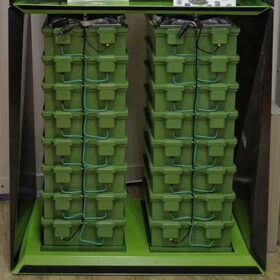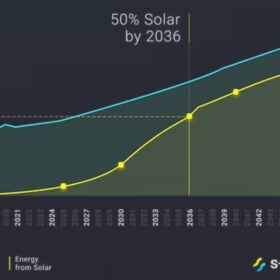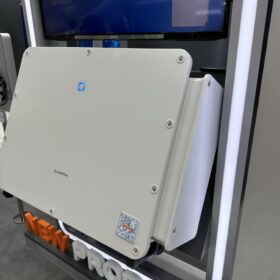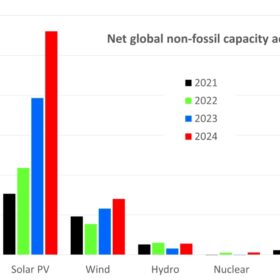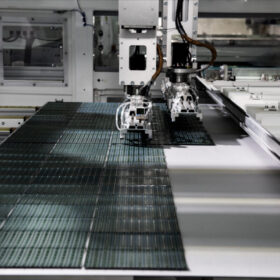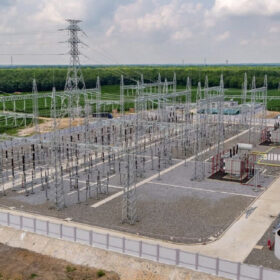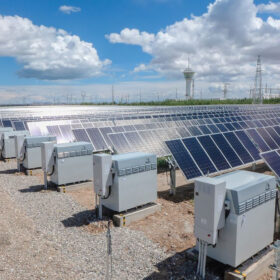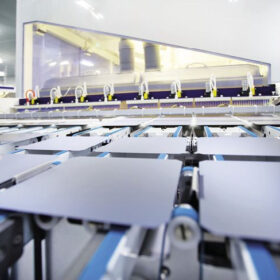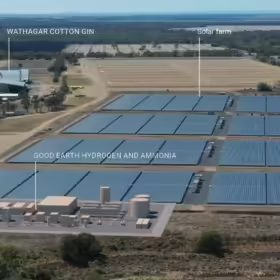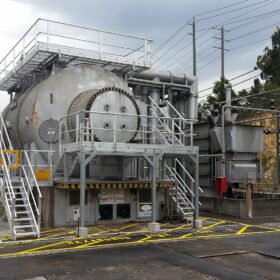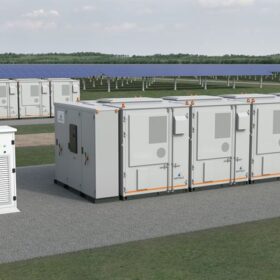Sodium-ion batteries face uphill struggle to beat lithium-ion on cost
A new Stanford University study finds that there are several key routes that sodium-ion battery developers can take to compete on price, specifically against a low-cost variant of the lithium-ion battery known as lithium iron phosphate (LFP).
Solis releases three-phase string C&I inverters with fuseless design
The Chinese inverter manufacturer said its new inverters have an MPPT current of up to 54 A and support more than a 150% DC/AC ratio. The new products also feature a maximum efficiency of 98.8% and a European efficiency rate of 98.3%.
New tool tips solar to supply 50% of global energy demand by 2035
Solar energy will satisfy more than 50% of global energy demand within a decade according to a new modelling tool that also predicts solar costs will continue falling by 10% a year.
Where will lithium-ion battery prices go in 2025?
After tumbling to record lows in 2024 on the back of lower metal costs and increased scale, lithium-ion battery prices are expected to enter a period of stabilisation.
Sungrow launches new inverter for C&I applications
Sungrow has launched a new inverter for commercial and industrial applications that it says achieves 98.8% efficiency and 98.2% European efficiency.
Fastest energy change in history continues
Solar and wind are being installed at a rate that is three times faster than all other new electricity sources combined. This offers compelling market-based evidence that PV and wind are now the most competitive and practical methods for deploying new generating capacity.
Chinese PV industry brief: Aiko Solar starts making back-contact PV panels
Aiko Solar has started production at its Jinan factory, its third facility for n-type all-back-contact solar modules. The plant is designed for 30 GW of solar cell and panel capacity, with the first 10 GW phase set to reach full output by late 2025.
Year in review: Solar and storage trends in 2024
In five key trends, pv magazine looks back over a year that saw PV module prices fall lower than many thought possible, while demand was restrained by grid congestion, among other challenges. Energy storage has had a strong year and geopolitics is seeing solar and battery manufacturing enter new regions as competition drives technical innovation.
Shift to 2 kV voltage in solar projects tipped to gain traction
Amid record-low prices for solar modules, the focus of cost reduction for utility-scale solar projects is shifting to non-module balance-of-system (BoS) expenses. A transition from 1.5 kV voltage to 2 kV in solar projects is expected to gain traction through 2030.
Solar manufacturing slows in bid to balance supply and demand
Smaller solar manufacturers have been shuttering production lines, but not at a pace fast enough to return profit margins to healthy territory. InfoLink’s Amy Fang considers what lies ahead for PV companies in the near term.
